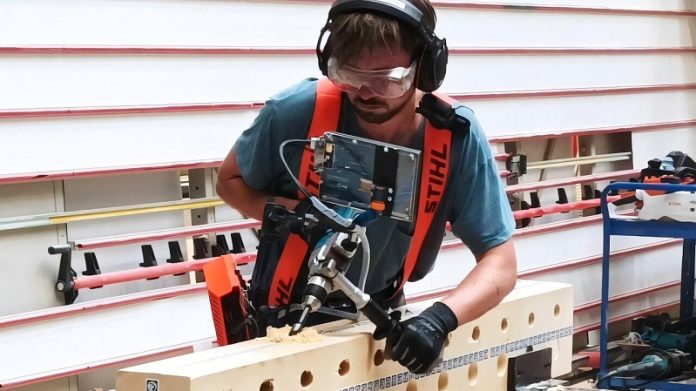
Carpenters may soon trade in their tape measures and pencils for high-tech glasses and screens, thanks to a new system developed at EPFL in Switzerland.
Called Augmented Carpentry, this new tool uses augmented reality (AR) to help woodworkers make incredibly precise cuts without needing to measure or draw lines on the timber.
Timber is becoming more popular in construction because it’s eco-friendly, stores carbon, provides good insulation, and allows for fast building.
But as the demand for wooden structures grows, so does the need for more accurate and efficient cutting methods.
While many large companies use expensive robots to handle timber cutting, these machines are too costly for most small workshops.
That’s where Augmented Carpentry comes in.
It combines human skills with computer-guided precision to make advanced carpentry more affordable and accessible—especially for small businesses and woodworkers in developing countries.
The system was developed over four years by Andrea Settimi, a Ph.D. student at EPFL, and a team of researchers.
It works by displaying digital guides—called holograms—on a screen over the actual piece of wood.
These colorful lines show the user exactly where and how to cut, drill, or shape the timber. The system even adjusts in real time if the beam or tool moves slightly, helping users stay on track and avoid mistakes.
To use the system, a carpenter first scans a batch of timber, allowing the program to “learn” the shape and size of each piece. Then, small markers are randomly placed on the wood so the camera can track their position.
Finally, a 3D woodworking plan is uploaded, and the system overlays the virtual guide directly onto the real timber.
The team created a large digital database of commonly used tools and trained the system to recognize them, even in cluttered and busy workshops. This allows the AR guide to stay properly aligned with the tools and beams, even in messy environments where traditional tracking methods might fail.
Because the technology uses regular woodworking tools enhanced with sensors and cameras, it makes high-precision work available to those without expensive machinery. It also allows less-experienced users to complete complex cuts with confidence.
According to Settimi, this hybrid approach blends the best of both worlds: the creativity and dexterity of humans, and the precision and speed of computers. The goal is to make construction methods smarter, more local, and more socially responsible, without removing people from the process.
With Augmented Carpentry, the future of woodworking is not only more accurate but also more accessible to all.
Source: EPFL.



